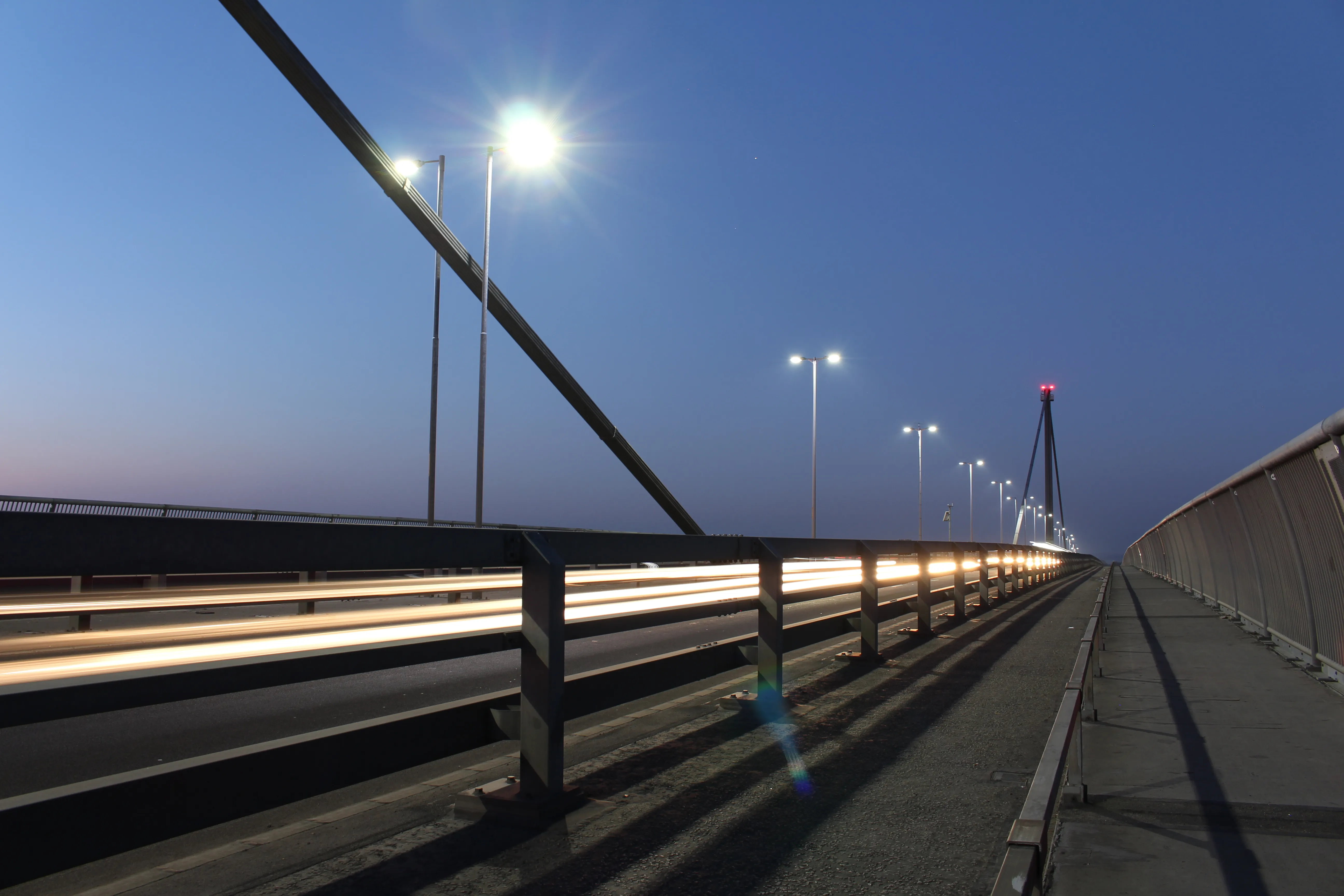Scottish MPs have voted overwhelmingly in favour of a replacement for the Forth Road Bridge that will protect a vital link in the strategic transport network.
The Forth Crossing Bill, introduced in November 2009, was praised by MSPs for bringing forward proposals for a world-class, 21st Century crossing to replace the existing 2,512m long bridge with a main span of over 1,000m as the main route for traffic across the Forth estuary to and from the capital Edinburgh.
Due to the deterioration of the main suspension cables and other ongoing maintenance issues the existing bridge, opened in 1964, cannot continue as the main crossing for cross-Forth traffic and may have to close to some vehicles by 2017. Under the current proposals it would be retained as a dedicated public transport corridor for buses, cycles and taxis.
An impression of how the new Forth crossing (right) could look
By protecting the strategically vital transport link, the FRC will secure over 3,000 jobs and economic revenue of £1.3 billion (€1.5 billion). It will also deliver significant additional economic benefits through the creation of hundreds of jobs and sub-contracting opportunities for local companies, estimated by the British Chambers of Commerce to be worth around £6 billion (€7 billion) to Scotland’s economy.
With the approval by the Scottish Parliament, the crossing is on track and on target to be successfully completed in 2016.
It is expected that the principal contract to build the bridge and
connecting roads, at an expected cost of £0.9 billion to £1.2 billion
(€1 billion-plus to €1.4 billion), will be awarded in April, 2011 with
the additional major contracts to upgrade the M9 Junction 1a and deliver
ITS in the County of Fife awarded soon after.






